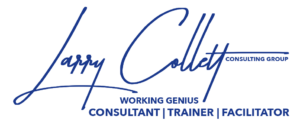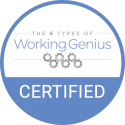Introduction to Working Genius and Its Relevance in AI
Understanding Working Genius
Working Genius, as a concept, highlights the six critical areas of aptitude that individuals possess when it comes to work. These areas include Wonder, Invention, Discernment, Galvanizing, Enablement, and Tenacity. Each of these facets plays a crucial role in how people approach tasks and challenges in the workplace.
Relevance of Working Genius in AI
When considering the implications of Artificial Intelligence (AI) on the future of work, understanding the Working Genius framework becomes even more important. AI technology is rapidly evolving and taking on various tasks that were traditionally done by humans. By recognizing the strengths and weaknesses of the different types of Working Genius, individuals can better navigate the changing landscape of work in the age of AI.
Integration of Working Genius and AI
Integrating the principles of Working Genius with AI technology opens up new possibilities for collaboration and efficiency. By combining human creativity, critical thinking, and emotional intelligence with the advanced capabilities of AI, organizations can harness the full potential of both human and machine intelligence to drive innovation and success.
Understanding the Six Types of Working Genius
Exploring the Nature of Working Genius
Working Genius is divided into six primary types that encompass the various ways people contribute to a team. These types are Natural Genius, Wonder, Discernment, Galvanize, Enablement, and Tenacity. Understanding these types can help individuals harness their strengths and collaborate effectively.
Unpacking the Six Types of Working Genius
Natural Genius refers to tasks that feel effortless and enjoyable to a person. Wonder is about the ability to see possibilities and ask insightful questions. Discernment involves making sound decisions based on wisdom and intuition. Galvanize refers to motivating and inspiring others to action.
Implementing the Working Genius Framework
Each individual possesses a unique combination of these working geniuses. By identifying their strengths and weaknesses in these areas, individuals can better understand how they contribute to a team and where they may need support. This framework can be used in professional settings to optimize team dynamics and productivity.
Applying Working Genius to Artificial Intelligence Development
Implementing Working Genius Framework
Using the Working Genius framework in artificial intelligence development involves identifying individuals’ strengths within the team. This allows for the delegation of tasks based on each person’s natural aptitudes, ultimately leading to more efficient and effective project outcomes.
Cultivating Diverse Perspectives
Incorporating the various types of Working Genius — Wonder, Invention, Discernment, Galvanize, Enable, and Tenacity — into the development process encourages a diversity of perspectives. This diversity enhances problem-solving abilities and promotes innovation within the team.
Enhancing Collaboration and Communication
Applying the concepts of Working Genius fosters better collaboration and communication among team members. By acknowledging and embracing each individual’s strengths, the team can work together more cohesively, leading to a more successful artificial intelligence development project.
Challenges and Opportunities in Integrating AI with Working Genius
Obstacles to Overcome
Integrating AI with the six types of Working Genius presents several challenges. One significant obstacle is the risk of job displacement as AI technologies automate tasks traditionally performed by humans. This can lead to concerns about job security and the need for upskilling and reskilling to adapt to evolving work environments.
Opportunities for Growth
Despite the challenges, there are opportunities for synergies between AI and Working Genius. AI can enhance productivity, decision-making, and efficiency in tasks related to the six types of Working Genius. By leveraging AI tools, individuals can focus on high-value, creative work that requires human intuition and cognitive skills.
Strategies for Integration
To successfully integrate AI with Working Genius, organizations can implement strategic planning and training programs. This includes fostering a culture that embraces innovation and lifelong learning, as well as creating frameworks for collaboration between humans and AI systems. Additionally, establishing clear guidelines for ethical AI use and data privacy is essential for the harmonious integration of these technologies.
Future Implications of Working Genius for AI Technology
Potential Transformative Impact
One significant future implication of applying the Working Genius framework to AI technology is the potential transformative impact it can have on the development and implementation of AI systems. By identifying and leveraging the different types of working genius within AI teams, organizations can optimize their projects, leading to more efficient and effective outcomes.
Ethical Considerations
Another crucial aspect to consider is the ethical implications of using the Working Genius model in AI technology. As AI systems become more advanced and integrated into various aspects of society, it is essential to ensure that these technologies are developed and used responsibly, taking into account issues such as bias, privacy, and accountability.
Ongoing Adaptation and Learning
Furthermore, integrating the concepts of Working Genius into AI technology requires a commitment to ongoing adaptation and learning. The dynamic nature of both AI and human work means that organizations must continually evolve their understanding and application of these principles to stay ahead in the rapidly changing technological landscape.


